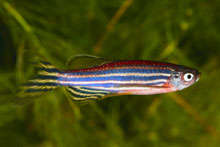After three decades of research, a team of researchers from the University of Konstanz (Konstanz), Germany, claim they have discovered how some animals can regenerate amputated limbs or damaged organs.

It was previously known that some species use a special acid to re-grow body parts, but no one was sure exactly how it worked. Researchers found that the zebrafish uses a genetic mechanism, epimorphic regeneration, that allows retinoic acid (RA) to control the formation of blastema, which means the animal is able to produce a store of cells that can rebuild a fin. While it was understood that RA played a part in the tropical freshwater fish’s ability to rebuild its fins and even heart muscles, the team found it was a critical element.
Before the zebrafish’s fins regenerate, the wound is closed with multiple layers of tissue. The cells beneath the stump then lose their identity and form what is called blastema.
“It is a huge success for us,” Gerrit Begemann, PhD, independent research group leader at Konstanz, told Swedish newspaper The Local. “Up to now, no one has really looked into what the actual function of this acid is.”
This work provides a mechanistic framework to understand previous observations in salamanders that link endogenous sources of RA to the regeneration process itself and support the hypothesis that the RA signaling pathway is an essential component of vertebrate tissue regeneration, according to Begemann’s research published in the developmental biology journal Development.
RA is produced by animals, including humans, from vitamin A and can activate the necessary genes for regeneration. It has been shown that pregnant women who do not take enough vitamin A in their diet can have underdeveloped fetuses. However, it will be some time before this knowledge can bring any benefit to humans.
“The problem is humans can’t regenerate tissue,” Begemann. “And at the moment we don’t understand enough about why not. Ultimately we want to know why.”




